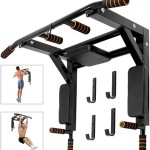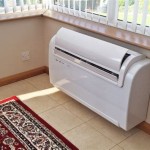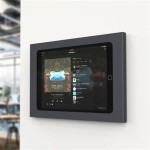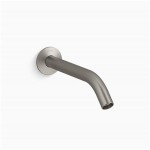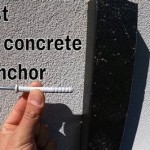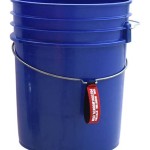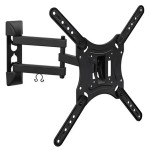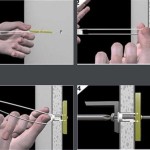Best Way to Wall Mount a TV: A Comprehensive Guide
Wall mounting a television can significantly enhance the viewing experience, improve room aesthetics, and optimize space utilization. However, the process requires careful planning and execution to ensure both safety and optimal performance. This article provides a detailed guide to the best practices for wall mounting a TV, covering essential considerations, step-by-step instructions, and important safety precautions.
Understanding Wall Mount Types and Compatibility
The first step in wall mounting a TV involves selecting the appropriate mount type. The ideal choice depends on factors such as TV size, weight, desired viewing angle, and wall construction. There are primarily three types of TV mounts available:
Fixed Mounts: These mounts hold the TV flush against the wall, providing a low-profile installation. Fixed mounts are ideal for situations where the viewing angle is consistent and minimal adjustability is required. They are generally the most affordable and easiest to install. However, accessing cables and ports behind the TV can be challenging once it's mounted.
Tilting Mounts: Tilting mounts allow the TV to be angled vertically, typically downwards. This is beneficial for reducing glare from overhead lighting or improving viewing angles when the TV is mounted high on the wall. The tilting range is usually limited, but it offers a degree of flexibility compared to fixed mounts. Accessing cables is slightly easier than with fixed mounts due to the tilting capability.
Full-Motion Mounts: Also known as articulating mounts, full-motion mounts offer the greatest flexibility. They allow the TV to be extended, swiveled, and tilted in multiple directions, providing optimal viewing angles from various locations in the room. Full-motion mounts are particularly useful for large rooms or spaces where the viewing area is not directly in front of the TV. However, they are typically more expensive and require more complex installation procedures. Due to their extendable nature, the wall needs to be robust to support not only the TV's weight but also the leverage exerted when the TV is extended away from the wall.
Before purchasing a mount, confirm its compatibility with the TV. This is primarily determined by the VESA (Video Electronics Standards Association) mounting pattern. The VESA pattern specifies the distance between the mounting holes on the back of the TV. Measure the horizontal and vertical distances between these holes in millimeters and compare them to the VESA specifications listed on the TV mount packaging. Ensure the mount supports the TV's weight; exceeding the weight limit can lead to mount failure and potential damage.
Preparing the Installation Site and Gathering Tools
Proper preparation is crucial for a successful and safe TV wall mounting project. This involves selecting the optimal location, identifying wall studs, and gathering the necessary tools.
Location Selection: Choose a location that provides comfortable viewing angles and avoids direct sunlight or glare. Consider the viewing distance; a general guideline is to multiply the screen size (in inches) by 1.5 to 2.5 to determine the ideal viewing distance (in inches). Ensure there are no obstructions, such as furniture or doorways, that may block the view.
Stud Identification: Locating wall studs is critical for securely mounting the TV. Wall studs provide the necessary structural support to bear the weight of the TV and mount. Use a stud finder to locate the studs behind the drywall. Most stud finders are electronic and detect changes in density behind the wall surface. Mark the location of the studs clearly with a pencil.
Tool Acquisition: Gather the following tools before beginning the installation: * Stud finder * Level (bubble or laser) * Drill with appropriate drill bits (for wood or concrete, depending on the wall type) * Screwdriver (Phillips head and flathead) * Pencil * Measuring tape * Safety glasses * Wire stripper/crimper (for cable management, if needed) * Cable ties or Velcro straps (for cable management) Also, it is good to have a second person to assist with the task, especially when handling large TVs.
Step-by-Step TV Wall Mounting Procedure
Follow these steps to safely and effectively wall mount the TV:
Step 1: Attach the Mounting Brackets to the TV: Place the TV face down on a soft, protected surface (e.g., a blanket or foam padding) to prevent scratching. Align the mounting brackets with the VESA mounting holes on the back of the TV. Use the appropriate screws (typically included with the mount) to securely attach the brackets to the TV. Ensure the brackets are level and tightly secured. If the screws provided are not the correct size or length, consult the TV's instruction manual or contact the manufacturer for recommendations. Do not overtighten the screws, as this could damage the TV's housing.
Step 2: Mount the Wall Plate: Align the wall plate (the part of the mount that attaches to the wall) with the marked stud locations. Use a level to ensure the wall plate is perfectly horizontal. Mark the positions of the mounting holes on the wall through the wall plate. Drill pilot holes at the marked locations using a drill bit appropriate for the wall material (wood or concrete). For wood studs, use lag bolts or screws to securely attach the wall plate to the studs. For concrete walls, use concrete anchors and screws. Ensure the wall plate is firmly attached and cannot be easily moved. The stability of the wall plate is crucial for the overall safety of the installation.
Step 3: Connect Cables: Before mounting the TV to the wall plate, connect all necessary cables, such as HDMI, power, and audio cables. This is much easier to do before the TV is mounted and reduces the risk of damaging the ports. Label the cables to easily identify them later. Having sufficient cable length is beneficial for adjusting the TV or accessing the ports later. Excess cable length can be managed using cable ties or Velcro straps.
Step 4: Mount the TV to the Wall Plate: With assistance from another person, carefully lift the TV and align the mounting brackets on the back of the TV with the corresponding slots or hooks on the wall plate. Secure the TV to the wall plate using the provided locking mechanisms (screws, clips, etc.). Ensure the TV is securely attached and cannot be easily dislodged. Double-check that all locking mechanisms are engaged and that the TV is level. Take the time to make sure the TV is fully secured, as this is the final moment before the TV is fully mounted.
Step 5: Cable Management: Organize and conceal the cables to create a clean and professional look. Use cable ties, Velcro straps, or cable sleeves to bundle the cables together. Consider using a cable management system, such as a wall-mounted cable raceway, to completely hide the cables from view. Avoid kinking or bending the cables excessively, as this can damage them. Ensuring proper cable management not only improves the aesthetics of the installation but also prevents accidental disconnections or damage to the cables.
Step 6: Final Adjustments: Make any necessary adjustments to the TV's position or viewing angle. For tilting mounts, adjust the tilt angle to minimize glare. For full-motion mounts, experiment with different positions and angles to find the optimal viewing experience. After making adjustments, double-check that all connections are secure and that the TV is still securely mounted to the wall. Take your time and ensure all screws are tight and components are fully connected. This is the time to address any issues or concerns to prevent future problems.
Safety Precautions and Considerations
Prioritize safety throughout the entire wall mounting process. Adhere to these precautions to prevent accidents and ensure a secure installation:
Weight Capacity: Never exceed the weight capacity of the TV mount. Overloading the mount can lead to failure and potential injury or damage.
Stud Location: Always mount the wall plate to wall studs. Mounting to drywall alone is insufficient and can result in the TV falling off the wall.
Electrical Safety: Disconnect the TV from the power outlet before starting the installation to prevent electrical shock.
Protective Gear: Wear safety glasses to protect your eyes from debris while drilling.
Professional Assistance: If unsure about any aspect of the installation, consult a professional installer. Improper installation can be dangerous and costly to repair. Especially if the wall is not sturdy enough to house the TV.
Cable Placement: Double check that cable placement does not interfere with the mount's operation. Cables that are bent or pinched may be damaged. Check proper cable routing to ensure free movement of the mount if it’s a full-motion type.

How To Mount A Flat Screen Tv On Wall The Home

How To Mount A Flat Screen Tv On Wall The Home

How To Properly Mount A Tv Wall Step By Youtube

How To Wall Mount A Tv And Hide The Wires Step By Guide Radio Times

How To Mount A Tv The Wall Simple And Safe Steps Youtube

How To Mount A Flat Screen Tv On Wall The Home

The 4 Best Tv Wall Mounts Of 2025 Reviews By Wirecutter

How To Mount A Flat Screen Tv On Wall The Home

How To Install A Tv Wall Mount Tips From The Pros Firefold

How To Build A Tv Wall Mount Gray House Studio

